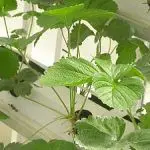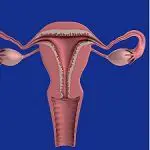Carpel and Pistil are the reproductive part of a flower in a plant, and they have a very slight difference between them. As carpel is composed of the stigma, style and ovary, while pistil is the union of the carpels or it can be the single carpel, so we can say that pistil is the fusion of carpels. One can easily distinguish the number of carpels by checking the number of … [Read more...] about Difference Between Carpel and Pistil
Difference Between Hydroponics and Aquaponics
When the plants are grown with the medium like sand, gravel or water but without soil is known as hydroponics. On the other hands, aquaponics is considered as the subset of the hydroponics, where the plants are grown in water, (without soil), and nutrients are provided from the by-products of fishes. We all are aware of the process known as photosynthesis, where the plants … [Read more...] about Difference Between Hydroponics and Aquaponics
Difference Between Liquefied Petroleum Gas (LPG) and Compressed Natural Gas (CNG)
Liquefied Petroleum Gas or LPG is the very known name for all of you, as it is known as the cooking gas. It is one of the natural gas which can be obtained as a by-product from the processing of natural gas and petroleum refining. It consists of butane, propane and butylene. Compressed Natural Gas or CNG is widely used gas in cars, and it is also a natural gas which is obtained … [Read more...] about Difference Between Liquefied Petroleum Gas (LPG) and Compressed Natural Gas (CNG)
Difference Between Homologous and Analogous Structures
Homologous structures are such structures that do not show exact similarity in their appearance and function but are linked with their common ancestor. On the other hand, analogous structures are such structures that are similar in their function and appearance but do not have any links between their ancestors. The arms of humans, legs of dogs, are the common examples of … [Read more...] about Difference Between Homologous and Analogous Structures
Difference Between Menarche and Menopause
The onset of the first menstrual period in the female adolescent is the menarche, while the termination or end of the menstrual cycle in the females is known as menopause. These are the two significant physical and biological milestone in the female's life. The studies on these events reveal that partially genetic and partially non-genetic factors (environmental factors, … [Read more...] about Difference Between Menarche and Menopause





